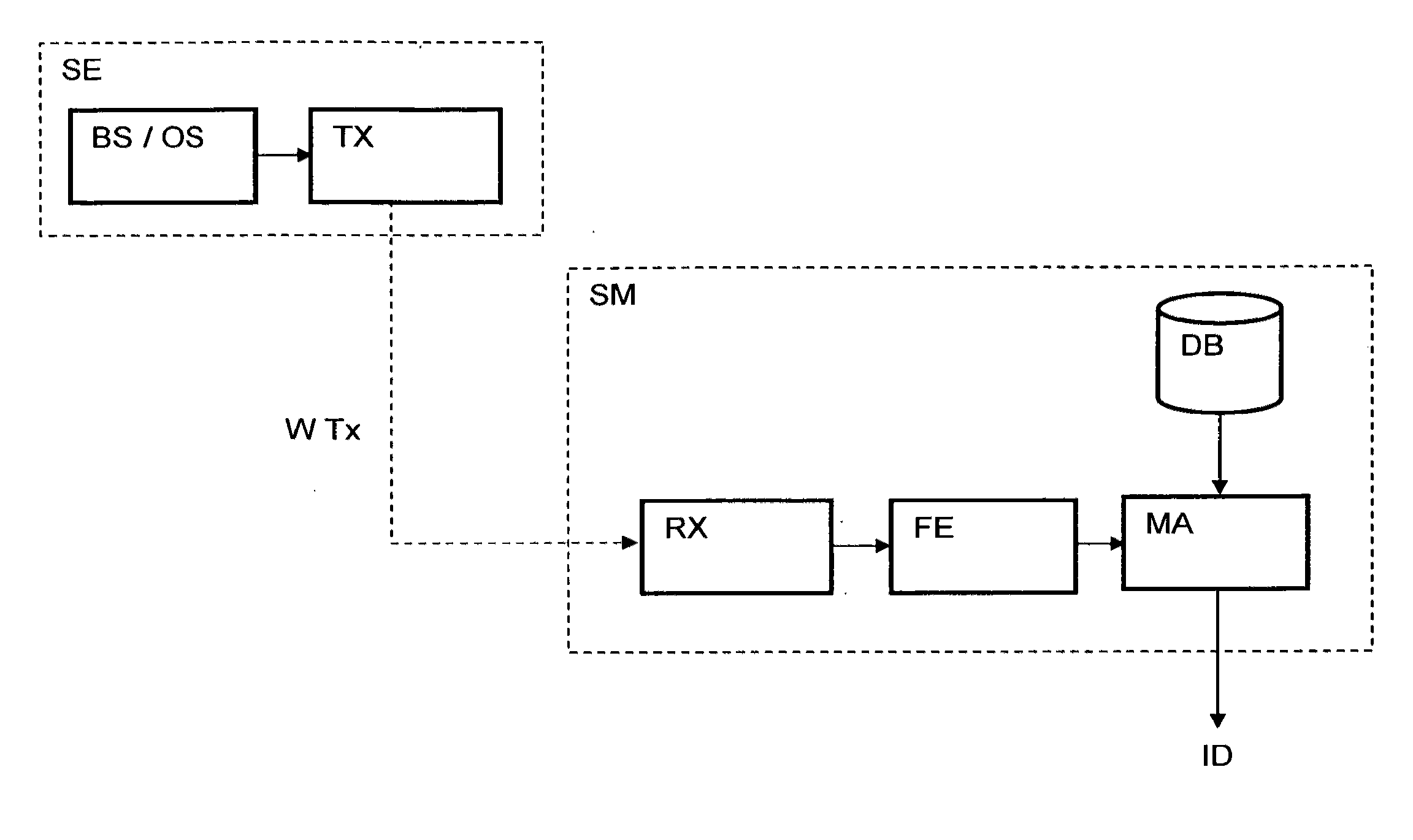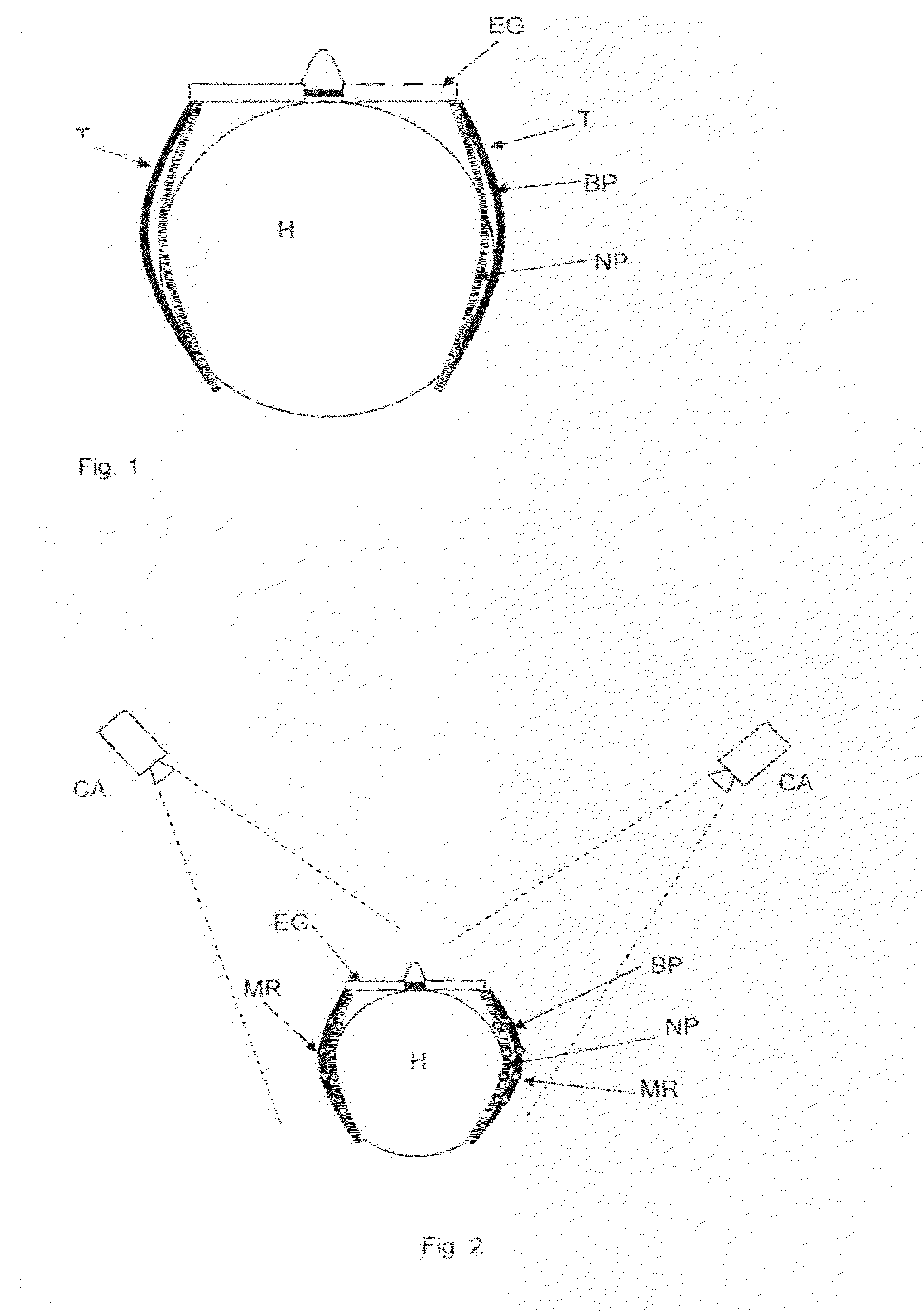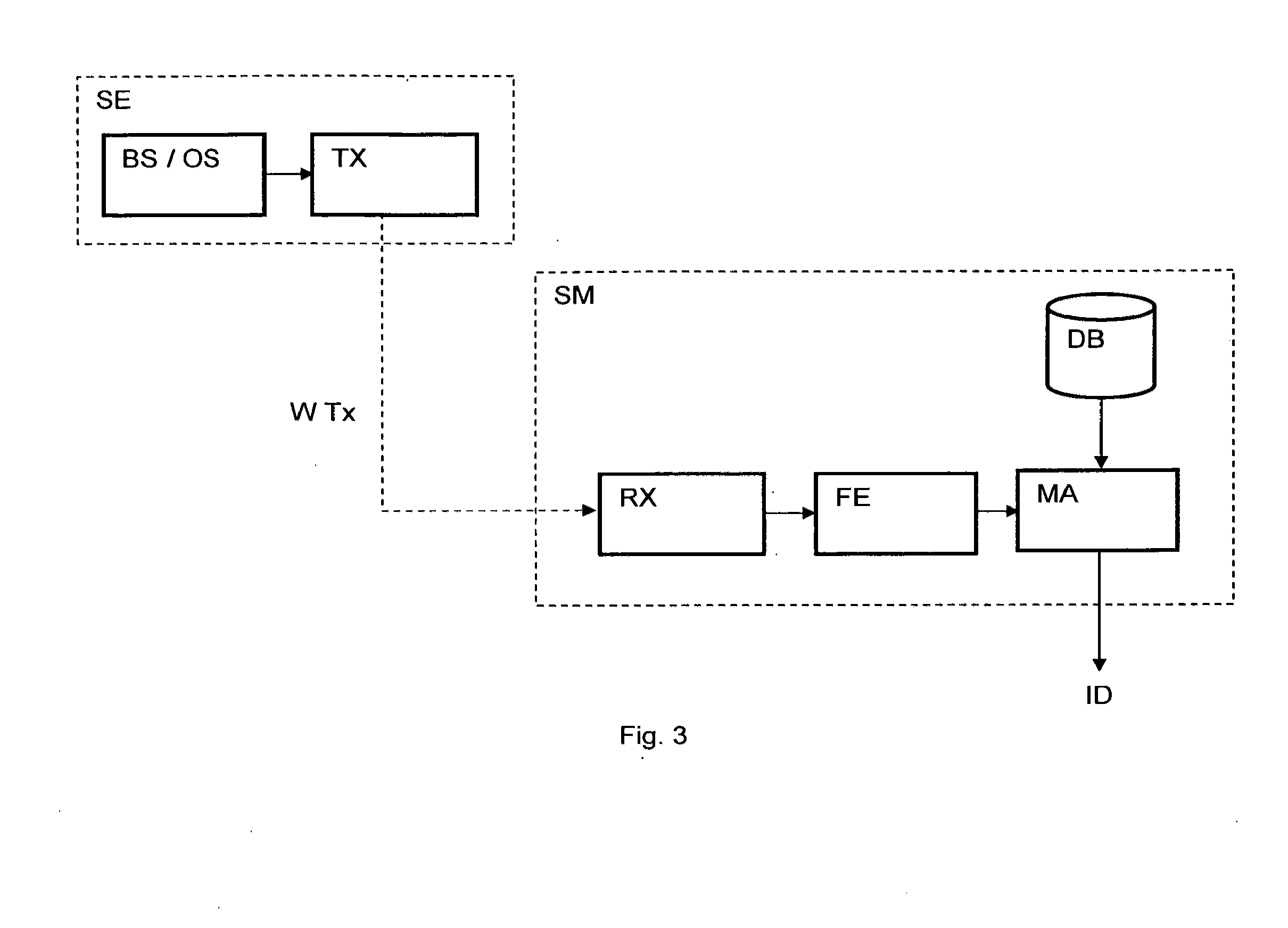System to identify a user of television services by using biometrics
a biometric and television service technology, applied in television systems, analogue secracy/subscription systems, broadcast information monitoring, etc., can solve the problems of insufficient maturity of auto-stereoscopic and holographic displays
- Summary
- Abstract
- Description
- Claims
- Application Information
AI Technical Summary
Benefits of technology
Problems solved by technology
Method used
Image
Examples
first embodiment
[0017]In the present invention a bend sensor BS may be integrated in the temples T of eyeglasses EG to measure a portion of the head H circumference. The temples T are curved to take on the exact shape of a portion of the circumference of the user's head H. The sensor BS produces a measurement value varying proportionally to the amount of the deflection of the temples T.
[0018]There are three most common types of bend sensors BS, cf. [5]:
a) Conductive ink-based sensor which electrical resistance changes depending on the amount of deflection on the bend sensor. These types of bend sensors are passive resistive devices typically fabricated by laying a strip of resistive ink on a flexible plastic substrate, shaped as a thin, flexible stripe in lengths between 1″ and 5″. At rest (when laid flat), the bend sensor is characterized by an intrinsic resistance. As the sensor is bent, the resistive materials inside it are pulled further apart. Fewer adjacent resistive particles come into conta...
second embodiment
[0023] the circumference of a head H is measured by using optical sensors OS as bend sensors BS similar to motion capture systems.
[0024]Light reflective markers MR are attached to the flexible temples T of the eyeglasses EG and aligned preferably at regular intervals along the length of the temple T. When the eyeglasses EG are worn, the temples T are bent to fit the shape of a portion of the circumference of the viewer's head H. In this way the positions of the markers change accordingly (see FIG. 2). At least one camera CA is arranged near the location of the user to acquire the biometrics by measuring the value of the deflection of the temples T through position variations of the markers MR between a neutral position NP and a bend position BP determined by the head circumference. The neutral position NP is defined by the position of the markers MR when the eyeglasses EG are put off from the user's head H. In this embodiment, the measurements values are transmitted wirelessly WTx t...
PUM
 Login to View More
Login to View More Abstract
Description
Claims
Application Information
 Login to View More
Login to View More - R&D
- Intellectual Property
- Life Sciences
- Materials
- Tech Scout
- Unparalleled Data Quality
- Higher Quality Content
- 60% Fewer Hallucinations
Browse by: Latest US Patents, China's latest patents, Technical Efficacy Thesaurus, Application Domain, Technology Topic, Popular Technical Reports.
© 2025 PatSnap. All rights reserved.Legal|Privacy policy|Modern Slavery Act Transparency Statement|Sitemap|About US| Contact US: help@patsnap.com



